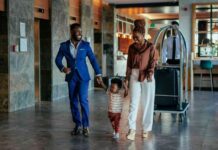In a recent turn of events, Stellantis CEO Carlos Tavares is facing mounting criticism from both the United Auto Workers (UAW) union and U.S. dealers over the company’s sales declines, factory production cuts, and other decisions that are viewed as detrimental to the automaker’s business. This backlash comes at a time when the company is grappling with challenges in the market and internal operations, leading to a significant decline in stock value and investor confidence.
Stellantis CEO Under Fire
The criticism against Tavares was highlighted in an open letter addressed to him by the head of Stellantis’ U.S. dealer council, Kevin Farrish. In the letter, Farrish condemned Tavares for prioritizing the company’s profits at the expense of sales, market share, and the reputations of its Chrysler, Dodge, Jeep, and Ram brands. The council, which represents the company’s 2,600 U.S. dealers, expressed concerns about the direction in which the company is heading under Tavares’ leadership.
Farrish, a dealer based in Virginia, raised issues about the sharp decline in market share for Stellantis brands, the tumbling stock price, plant closures, widespread layoffs, and the departure of key executives from the company. He accused Tavares of making reckless short-term decisions that focused on boosting profits and padding his compensation, but ultimately led to the rapid degradation of the company’s brands.
Stellantis Responds
In response to the criticism, Stellantis released a statement asserting that it takes “absolute exception” to the claims made in the open letter. The company cited a 21% increase in August sales compared to the previous month and highlighted an “action plan developed with the dealer body” to address the concerns raised.
Stellantis emphasized its commitment to working with dealers to address challenges and deliver results, urging for a collaborative approach to problem-solving rather than resorting to public attacks. The company expressed confidence in its ongoing efforts to navigate the current market conditions and improve its performance in the coming months.
Financial Challenges and Cost-Cutting Measures
Despite reporting a record profit in 2023, Stellantis faced setbacks in the first half of this year, with a 48% decline in net profit compared to the same period in 2023. The company’s stock value plummeted by approximately 36% this year, reaching a new 52-week low.
Tavares has been leading a profit-driven and cost-cutting strategy since the merger between Fiat Chrysler and France’s PSA Groupe in 2021. The “Dare Forward 2030” plan aims to increase profits and double revenue by 2030, prompting significant restructuring and efficiency measures within the company.
The cost-saving initiatives have involved reshaping the supply chain, workforce reductions, and scaling back vehicle production at various plants. While some Stellantis executives viewed these measures as necessary for the company’s long-term sustainability, others criticized the extent of the cuts as excessive and burdensome.
Union Discontent and Public Criticism
In addition to the concerns raised by U.S. dealers, the UAW President Shawn Fain has publicly criticized Tavares for alleged price gouging and failure to uphold parts of the union’s labor contract with the automaker. Fain, who represents around 38,000 Stellantis employees, has voiced his discontent with the management decisions that have impacted workers and the overall business operations.
The UAW plans to hold a rally near Stellantis’ Warren Truck Assembly Plant in suburban Detroit to denounce what it calls “gross mismanagement” at the company. The union’s dissatisfaction reflects broader tensions between labor groups and corporate leadership as they navigate the challenges of the evolving automotive industry landscape.
Market Performance and Sales Declines
Stellantis, formerly known as Fiat Chrysler, has experienced a decline in U.S. sales since its peak in 2018, with a significant drop in vehicle deliveries over the past few years. The company sold over 1.5 million vehicles in the previous year, marking a marginal decrease from 2022 and a notable decline compared to earlier periods.
This decline in sales contrasts with the overall U.S. new light-duty vehicle market, which saw a 13% increase in sales last year. The discrepancy underscores the challenges faced by Stellantis in maintaining its competitive position in a rapidly changing industry landscape.
As Stellantis grapples with internal and external pressures, the company is tasked with finding a balance between cost-cutting measures, operational efficiency, and strategic growth initiatives to regain market share, investor confidence, and employee trust. The road ahead is fraught with challenges, but the company’s ability to adapt and innovate will be crucial in shaping its future trajectory.






















